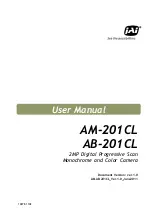
User Manual
65
A small hole in such an enclosure only affects this radiation level very slightly. The area of the hole should not exceed 5% of the area of the walls
of the enclosure, when the radiation passing through the hole is within about one part in a thousand of the blackbody radiation level defined by
the wall temperature. Such a device is fairly easy to build and forms the source on which all thermometers are calibrated.
A surface always emits less radiation than would a black body at the same temperature by a factor called the "emissivity" of the surface.
Emissivity =
Radiation emitted by surface
Radiation emitted by black body
How Do We Deal With Emissivity?
If we ignore the emissivity altogether and infer a temperature from the thermometer output, we shall get a temperature lower than the true
temperature by an amount depending on the value of emissivity and the characteristics of the thermometer. This temperature is known as the
"apparent" or "brightness" temperature of the surface. If the emissivity is constant, this temperature rises and falls in exactly the same way as
the true temperature and this may be sufficient for some purposes.
More often the true surface temperature is required. We have:
Actual output = E x output when viewing blackbody
To obtain the true surface temperature we must divide the actual output by the emissivity value E before we convert to temperature.
This is done by setting the emissivity control to the appropriate value.
It is therefore necessary to know the value of the emissivity. There is a vast amount of data available, unfortunately much of it is confusing
because substantially different values are quoted. This is because emissivity depends upon:
a) The basic material
b) Surface condition - roughness and oxidation
c) Temperature
d) Angle of view
e) Wavelength
For materials with smooth, clean (unoxidised) surfaces, emissivities are usually in the range 0.05 to 0.50 and are usually very wavelength
dependent, being higher at shorter wavelengths. The appropriate settings for the
RAZ-IR® NANO
Thermal Cameras are given in the following
tables. It must be remembered that these are only guideline figures. They can be substantially increased if the surface is rough or even slightly
oxidised.
The values quoted for oxidised metals assume that the metal is heavily oxidised. Thin oxide layers will give an emissivity value between this and
the value for an unoxidised surface.


































